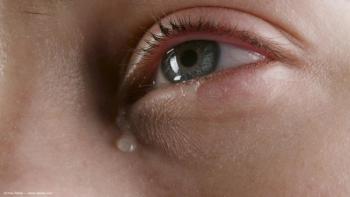
Ocular pickleball injuries rise sharply with increasing game popularity
Key Takeaways
- Pickleball's popularity surged, with a 311% increase in players since 2020, reaching 19.8 million in 2024.
- A cross-sectional study found a significant rise in pickleball-related ocular injuries, with 1,262 cases in 2024 alone.
While the injuries associated with other similar sports, such as tennis, badminton, and racquetball have been investigated in many studies, no epidemiologic studies have specifically focused on the incidence of ocular injuries that occur in pickleball
A study recently published in JAMA Ophthalmology found that pickleball-related eye injuries have increased “at an alarming rate over the past 4 years.” Of concern is that eye protection is not yet mandated for engaging in the sport at any level,1 the authors, led by Corey R. Lacher, MD, from the Department of Ophthalmology & Visual Science, Rutgers New Jersey Medical School, Newark, reported.
He was joined in this study by Irene Koc, MD, from Rutgers Robert Wood Johnson Medical School, New Brunswick, NJ, and Jonathan C. Tsui, MD, from the Department of Ophthalmology & Visual Science, Rutgers New Jersey Medical School, and the Department of Ophthalmology, Veterans Affairs New Jersey Healthcare System, East Orange, NJ.
The authors pointed out the rapid increase in the popularity of pickleball over a very short period of time. “Pickleball has increased in popularity in the United States, with approximately 19.8 million players in the US as of 2024. 2-4 The sport’s low-impact nature and straightforward rules contribute to its broad appeal and accessibility. As a result, the number of people engaged in the sport has increased 44% from 2023 to 2024 and an impressive 311% since 2020,5” they commented.
While the injuries associated with other similar sports, such as tennis, badminton, and racquetball,6-11 have been investigated in many studies, no epidemiologic studies have specifically focused on the incidence of ocular injuries that occur in pickleball, they explained.12-17
Lacher and colleagues conducted a cross-sectional study in which they assessed the incidence rate and the demographic factors associated with pickleball-related ocular injuries over the past 20 years.
They obtained a population-based sample of cases with ocular injuries that occurred while playing pickleball from the National Electronic Injury Surveillance System database from 2005 to 2024.
The main outcomes were the unweighted number and weighted number (percentage) of pickleball-related ocular injuries. Demographic information including age, sex, treatment year, and laterality of the injury were collected. The mechanisms of eye injuries and types of eye injuries were also assessed.
What did the analysis uncover about pickleball injuries?
The authors reported a surprising statistic for 2024, ie, that 1,262 ocular injuries occurred in association with pickleball in that year alone; this is in contrast to the almost 20-year span between 2005 and 2024 when there was an estimated 3,112 injuries.
“Based on a survey-weighted linear regression, the estimated incidence of pickleball-related eye injuries increased by 405 cases (95% confidence interval [CI], 288-522 cases; P = 0 .004) annually from 2021 to 2024. There were more pickleball-related ocular injuries among patients aged 50 years or older than among patients younger than 50 years (difference, 39%; 95% CI, 6%-65%; P = 0 .03). Severe eye injuries included retinal detachment, orbital fracture, globe trauma, and hyphema. Mechanisms of injury included direct hit by a pickleball, direct hit by a paddle, and falls,” the authors reported.
Lacher and colleagues concluded, “This cross-sectional study found that the annual incidence of pickleball-related ocular injuries increased substantially from 2021 to 2024, with an estimated 1,262 cases occurring in 2024 alone. Most affected individuals were 50 years of age or older. Severe ocular injuries included retinal detachment, globe trauma, orbital fracture, and hyphema. Currently, no official guidelines exist regarding eye protection in pickleball. Increasing awareness for age-specific risk factors and establishing standardized recommendations for eye protection may help reduce injury rates and prevent vision loss.”
References
Lacher CR, Koc I, Tsui JC. Pickleball-related ocular injuries among patients presenting to emergency departments. JAMA Ophthalmol. Published online October 16, 2025. doi:10.1001/jamaophthalmol.2025.3577
How Pickleball Became America’s Fastest Growing Sport. October 17, 2022. Accessed December 8, 2024.
https://www.nationalgeographic.com/history/article/pickleball-is-for-everyone-inside-americas-fastest-growing-sport America’s Fastest-Growing Sport Is Pickleball: NPR. February 19, 2022. Accessed December 8, 2024.
https://www.npr.org/2022/02/19/1081257674/americas-fastest-growing-sport-pickleball Sports & Fitness Industry Association (SFIA). 2025. Accessed June 30, 2025.
https://sfia.users.membersuite.com/shop/store/f147b189-00ce-c644-c3fe-0b47ebabdede/detail?ref=thedinkpickleball.com Flamm J. Report: Pickleball participation surges to nearly 20 million in 2024. March 18, 2025. Accessed June 30, 2025.
https://www.thedinkpickleball.com/report-pickleball-participation-surges-to-nearly-20-million-in-2024/ Hoskin AK, Watson S, Kamalden TA. Badminton-related eye injuries: a systematic review. Inj Prev. 2023;29:116-120. doi:
10.1136/ip-2022-044564 Gescheit DT, Cormack SJ, Duffield R, et al. Injury epidemiology of tennis players at the 2011-2016 Australian Open Grand Slam. Br J Sports Med. 2017;51:1289-1294. doi:
10.1136/bjsports-2016-097283 Chevinsky JD, Newman JM, Shah NV, et al. Trends and epidemiology of tennis-related sprains/strains in the United States, 2010 to 2016. Surg Technol Int. 2017;31:333-338.
Dines JS, Bedi A, Williams PN, et al. Tennis injuries: epidemiology, pathophysiology, and treatment. J Am Acad Orthop Surg. 2015;23:181-189. doi:
10.5435/JAAOS-D-13-00148 Changstrom B, McBride A, Khodaee M. Epidemiology of racket and paddle sports-related injuries treated in the United States emergency departments, 2007-2016. Phys Sportsmed. 2022;50:197-204. doi:
10.1080/00913847.2021.1892467 Nhan DT, Klyce W, Lee RJ. Epidemiological patterns of alternative racquet-sport injuries in the United States, 1997-2016. Orthop J Sports Med. 2018;6(7):2325967118786237. doi:
10.1177/2325967118786237 Ghattas YS, Zeblisky P, Cassinat J, Aceto M, Spindler KP, Cannada LK. Pickleball-related fractures in the United States from 2002 to 2022: an analysis using the NEISS database. Orthop J Sports Med. 2024;12:23259671241255674. doi:
10.1177/23259671241255674 Forrester MB. Pickleball-related injuries treated in emergency departments. J Emerg Med. 2020;58:275-279. doi:
10.1016/j.jemermed.2019.09.016 Azar FM, Lamplot JD, Bernholt DL, Spence DD. Pickleball: a standard review of injury prevalence and prevention in a rapidly growing sport. J Am Acad Orthop Surg. 2024;32:e1130-e1141. doi:
10.5435/JAAOS-D-24-00151 Weiss H, Dougherty J, DiMaggio C. Non-fatal senior pickleball and tennis-related injuries treated in United States emergency departments, 2010-2019. Inj Epidemiol. 2021;8:34. doi:
10.1186/s40621-021-00327-9 Firouzbakht PK, Bagdady K, Gupta R, Lu SM, Chen K. Quite a pickle: a 10-year increase in pickleball-related hand injuries. Hand (NY). 2025;20:790-794. doi:
10.1177/15589447241238371 Opara OA, Brush PL, Pohl N, et al. Pickleball- and paddleball-related injuries in the lower extremity: description, treatment options, and return to play. Cureus. 2024;16:e53954. doi:
10.7759/cureus.5395
Newsletter
Don’t miss out—get Ophthalmology Times updates on the latest clinical advancements and expert interviews, straight to your inbox.








































